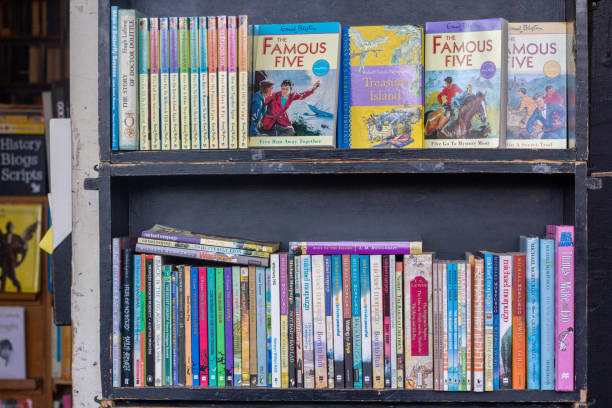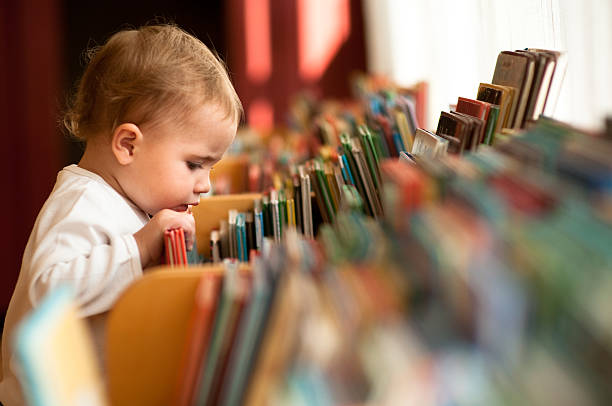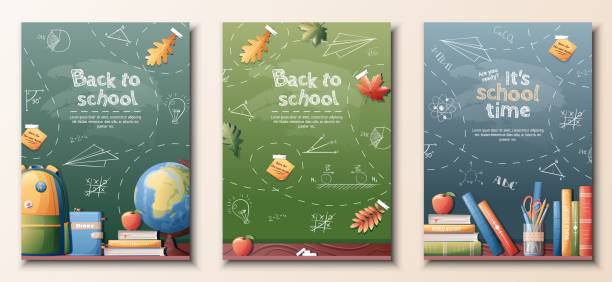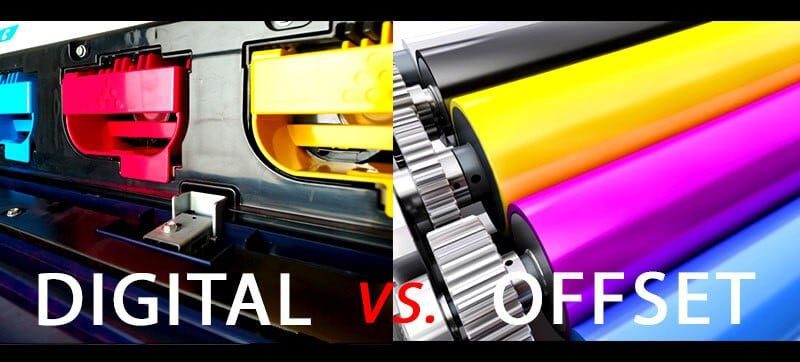
Despite the digital media surge, physical children’s books remain highly engaging. They offer a tactile experience that stimulates children’s senses, creating memorable encounters. Children’s Book Printing are instrumental in early literacy, education, and entertainment, playing a key role in child development.
Offset printing ensures superior quality in children’s books, outshining its digital counterpart. With its ability to produce detailed and vibrant images, it’s the top choice for premium children’s books.
The paper choice is critical in capturing a child’s attention. Utilising 128gsm coated art paper boosts image clarity and vividness, captivating young audiences.
When it comes to design, the right format is essential. The landscape layout, in sizes such as 11 x 8.5 or 12 x 9 inches, not only looks visually appealing but is also easy for children to handle.
Choosing appropriate binding and shipping options is also vital for the budget and scheduling of printing projects. The selection of the right fonts and colours is crucial, ensuring the book is not only beautiful but also conducive to learning, sparking a love for reading in children.
On binding, Saddle Stitched books are a more cost effective option, but it’s important to remember that the maximum page count is around 76, and the page count must be in multiples of 4 to make the book work. Often authors will add blank pages in to round them up to the correct page count. Perfect Binding does not have this limilation, and is suited to books with higer page counts. Its worth noting that no matter what type of book you produce, the Art should be provided for the print job as a print ready PDF. This esures your printed has all the tools required to ensure the design is printed as crisply and accurately as possible,
Furthermore, producing limited quantities can make a children’s book stand out. This approach adds a level of exclusivity, attracting interest from collectors and readers. It also provides valuable marketing insights and boosts the book’s perceived value.
In summary, the process of printing children’s books delivers a multi-faceted benefit. By combining tactile experiences with striking visuals and strategic design, these books promote learning, stimulate early literacy, and cultivate an enduring passion for reading.
Embracing the Tangible: Children’s Book Printed in the Digital Age

In our digital era, devices like e-readers and tablets are everywhere. But, the charm of traditional children’s books continues to hold its own. Print books offer more than words and pictures; they bring a tactile joy that kids love. This experience is unique and unmatched by digital media.
The Sensory Experience of Physical Picture Books
Printed children’s books step up in ways that pixels just can’t match. With a real book, kids get to touch, feel, and turn the pages as they read. They interact with the story through the physical book itself. This not only makes reading fun but also helps with their learning.
Studies have shown that paper books help kids focus and understand better. Unlike screens that buzz with new messages, books draw children in. By physically handling a book, kids are more involved in the story. This active participation makes their reading more enriching and memorable.
Creating Lasting Memories with Printed Children’s Books
Printed books aren’t just stories; they’re also memories waiting to happen. Every page turned is a step into a world kids can call their own. This ownership of a physical book leads to deep, emotional ties. Kids cuddled up with a book, turning pages, are making memories that last a lifetime.
Reading from a book brings kids and adults together. It’s a shared experience that promotes reading as a joyous activity. Pictures and words combine in a way that helps children learn new things. As they see, hear, and touch, they’re growing in every story.
Reading from paper is good for the eyes, too. The low light and feel of a real book are kinder on young eyes. Opting for print offers a healthier choice for kids. By choosing this path, both families and teachers support a better learning environment for children.
In the end, despite the popularity of digital books, prints books are not going anywhere. They give children something special – a world they can touch and feel. Thanks to modern printing methods, these treasures are more accessible than ever. The love for physical children’s books will continue to be shared, creating beloved memories and teaching kids the joy of reading.
Ensuring Durability: Materials and Binding in Children’s Book Printing
Durability stands as the cornerstone for children’s books. Kids, ever keen and sometimes less than gentle, challenge the worth of a book. Thus, choosing the right materials and binding methods for printing becomes critical.
Top-notch materials not only render children’s books visually appealing but also ensure they last. Glossy papers, for instance, offer both a radiant base for images and enhanced resilience against little hands’ roughness.
For hardcover editions, case binding proves a winning formula. This method cements the pages to a solid cover, shielding against wear and tear and maintaining the book’s structure through time.
Illustrations being a staple of children’s books, opting for premium paper is a must. The correct paper type bolsters vivid printing and diminishes the odds of tearing, with thicker variations emerging as the preferred choice.
Furthermore, authentic color rendering is pivotal. The hues must stay faithful to the artist’s intent, whether they grace charming characters or awe-inspiring scenery.
Thorough text proofing and employing expert editors are standard steps in educational book creation. This detailed approach enriches the reading journey and ensures flawless content, aiding effective message conveyance.
Though making children’s books is an investment, the value comes in crafting editions that easily stand up to boisterous curiosity. The process—from printing to binding to final delivery—merits a careful budget.
Printers extend a range of options including digital and offset printing. While the former suits smaller projects for its cost efficiency, the latter shines with its high quality and economic benefits on larger scales.
Design strategies for children’s books must take into account readability. Careful selection of typefaces, sizes, and layout instils a joy for reading in their young audience, aiding in the development of literacy.
Notably, by prioritising quality materials, apt binding techniques and meticulous production, children’s book publishers guarantee their releases endure over time. They aim to fill young minds with wonder and creativity, hour after joyful hour.
Children’s Book Printing Considerations
| Printing Method | Best for | Cost | Quantity |
|---|---|---|---|
| Digital Printing | Small print runs | Cost-effective | Ideal for low quantities |
| Offset Printing | Large quantities | Lower cost per unit | Suitable for bulk orders |
Captivating Young Minds: The Art of Illustration in Picture Books

Harmonising Text with Imagery for Interior Pages
Illustrations in picture books draw young readers into the story. By blending text and images seamlessly, these books offer an engaging journey.
Studies confirm picture books’ role in sparking children’s imagination. The mix of striking visuals and thoughtful text pulls kids into the narrative, deepening their interest.
The style of illustrations is pivotal in a book’s success. Watercolors, a favourite among 60% of publishers, stir emotion and wonder. Such unique styles not only attract children but also enrich their experience.
Illustrators and authors must work hand in hand to enrich a book’s story. By aligning with the author’s vision, illustrators breathe life into narratives, capturing young hearts through their art.
The Power of Engaging Cover Design
For children’s books, the cover is paramount in drawing initial interest. Surveys reveal a 40% higher selection rate for books with appealing covers. This points to the crucial role of cover art in grabbing children’s attention.
A well-designed cover with enticing imagery acts as a call to adventure. It not only introduces the story but also encapsulates its essence, compelling young readers to delve further.
Authors and illustrators team up to ensure the cover accurately reflects the story within. Their work produces appealing art that not only attracts but also engages children, inviting them into the book’s world.
Statistical Data Related to Children’s Book Illustration
| Percentage of Authors Using Illustration Styles Preferred by Publishers Impact of Cover Art on Book Sales Client Satisfaction Rates Illustration Package Popularity Average Timeline for Illustration Projects | |||||
|---|---|---|---|---|---|
| 85% | Watercolor illustrations are favored by 60% of publishers. | Books with visually captivating cover art have a 40% higher chance of being selected by readers. | Authors collaborating with illustrators reported a 95% satisfaction rate with the final illustrations. | 70% of first-time authors opt for comprehensive illustration packages. | Illustration projects typically take 3 to 6 months to complete. |
Digital vs Offset Printing: Choosing the Best Process for Children’s Books

Choosing the right print process method for children’s books is crucial. It ensures a balance between quality and cost. Digital printing and offset printing are the top choices, with distinct benefits and considerations.
Comparing Quality and Cost Efficiency
Digital printing shines with smaller quantities, offering cost savings. This is especially beneficial for those printing low volumes, such as self-publishing authors. It also provides quick turnaround times, ideal for quicker distribution.
However, offset printing stands out when it comes to quality for larger print runs. It’s great for achieving vibrant colours and sharp text. This is important for books meant to engage young readers. Yet, for small quantities, the initial cost might be higher than digital printing.
Print Specifications for a Standout Children’s Book
Creating an engaging children’s book requires specific print specifications. Let’s dive into these important considerations:
- Paper Type: Choosing 128gsm coated art paper for inside pages boosts illustration vibrancy. It also ensures page durability.
- Size: Dimensions like 11 x 8.5 inches or 12 x 9 inches in landscape format enhance the book’s visual appeal.
- Fonts: For picture books and early readers, opt for 16-24 point fonts. Clear, bold text increases readability.
- Colors: Select colour themes that match the age group of the readers. Bright, warm colours often engage younger audiences.
- Bleed and Crop Marks: These must be in place for a professional finish. They ensure illustrations and text reach the page edges properly.
Authors and publishers can create captivating children’s books by focusing on these specifications. Such attention to detail will draw young readers into the story.
| Digital Printing | Offset Printing | |
|---|---|---|
| Cost | Cost-effective for smaller print runs | Optimal for bulk quantities |
| Quality | Suitable for shorter runs without compromising quality | Higher quality results compared to Digital Printing |
| Turnaround Time | Faster turnaround times | Longer turnaround times |
| Recommended Use | Short runs with no minimum orders | Larger print runs for higher quality |
Navigating Printing Services: Optimising the Children’s Book Printing Journey
When aiming to print children’s books, selecting the right printing services is key to a successful journey. It’s important to work with established professionals who offer cutting-edge technology and advice. This helps in making well-informed decisions during the entire printing process.
First off, you need to choose between offset printing and print-on-demand (POD) services for children’s books. Offset printing suits larger volumes, from 300 to 10,000 books, which can save money on printing costs. Even though the setup costs are higher than POD’s, this is beneficial for authors looking to self-publish.
With offset printing, you can customise your book extensively. You have options like UV spot finishes, foil stamping, embossing, gloss lamination, and more. These choices make your book look professional and visually striking on the market.
POD services, introduced by Amazon through CreateSpace in 2016, focus on ease and flexibility. However, these services might not be the best fit for authors at the beginning of their journey or for those needing high-quality books. They are great for smaller print runs but might not work well for specific book types.
For self-published children’s book printing services, selecting the best is pivotal. Kindle/Amazon, Blurb, and Lulu are popular among authors for their efficiency. They offer self-publishing tools, such as free ISBNs and cover design freedom, helping authors to control their projects.
Engaging with reputable companies like PlayfulSparks Production BDP can also elevate your printing process. They specialise in book formatting, stunning illustrations, and animations. Their services add a professional quality to your self-published children’s book.
After printing, focusing on marketing is essential to reach the digital audience effectively. Strategies like social media, animation, book trailers, captivating websites, and word-of-mouth can significantly boost your book’s success. Collaboration with others in the field is also a valuable strategy.
Self-publishing grants creative freedom, higher royalties, and a quicker process but involves editing, design, and marketing investments initially. Traditional publishers, on the other hand, provide wider distribution and professional support. However, they usually offer lower royalty rates. Smaller houses present a compromise with better royalties and some support.
By carefully considering available printing options, their benefits and drawbacks, and how they serve your aspirations as an author, you can truly enhance your printing journey. This approach will help bring your custom children’s book to life in a way that captivates and influences young readers.
Fostering Early Literacy: The Role of Print in Child Development
Print media, such as children’s books, is vital for early literacy. Kids between 3-5 grasp print awareness quickly. This means they understand print carries meaning. They learn about letters, how to form words, and why print matters.
Encouraging Reading Habits in Early Readers
Getting young kids to love reading is key for literacy growth. Exposure to print and regular reading sets a strong foundation. Variety in books and other materials sparks interest and curiosity. It’s a way to build vocabulary, comprehension, and focus.
To boost reading, home and school must support it. They can read to kids, let them read alone, and talk about stories. This all helps strengthen good reading behaviours.
Children’s Book Printing as a Means to Educate and Entertain
Children’s books are not just for fun; they’re powerful educators. They mix stories, pictures, and lessons. This makes learning enjoyable for kids.
For example, the STAR program is designed to grow print awareness. It uses specific activities and books over 30 weeks. Adults play a big role by pointing out print features during reading.
The NELP points out essential literacy understandings every child should have. Knowing the alphabet, for instance, is crucial. These knowledge bits come from interacting with printed stuff, like kids’ books.
Educators help kids turn thoughts into words through drawings and writing. Engaging visuals and sounds in learning materials also boost writing exploration. They all enhance how kids express and understand language.
By making use of a picture book, we aid early literacy. We help kids love reading and set them on a solid learning path.
Setting the Scene: The Importance of Paper Quality in Children’s Books
The paper quality in children’s books is crucial. It affects the book’s lifespan and the look of the illustrations. It adds to the pleasure of reading.
Enhancing Visual Appeal with the Right Paper Type
Choosing the right paper type for children’s books is key for a visually attractive outcome. Each paper type has its own benefits for enhancing illustrations and the story. Coated art paper is often the top choice. It brightens the colors and makes images vivid.
Utilising Coated Art Paper for Vivid Illustrations
Coated art paper works wonders for books with bold illustrations. Its slick surface makes images pop. This captivates kids, drawing them into the pictures with every page turn.
The Wild Tribe Heroes book, sized at 210x272mm, varies from standard sizes. It uses coated paper to make illustrations truly eye-catching, sparking interest.
The feel of coated art paper also elevates the reading experience. Kids get pulled into the story as they feel the smooth paper. This personal connection enhances their enjoyment.
Choosing quality paper for children’s books is a big decision. Coated art paper, for instance, can create beautiful books. This helps kids love reading and ensures their books last for many years.
Design That Engages: Font and Colour in Children’s Book Printing

The design of a children’s book significantly impacts how it keeps young readers immersed. Focusing on fonts and colours is key to this. Each plays a critical role in the engagement process.
Selecting fonts carefully is crucial. They should be clear and easy to read. It’s best to steer clear of complex, hard-to-decipher styles. Those can actually trouble kids and reduce the joy of reading. Instead, favour simple, yet attractive and age-suited fonts.
Colour brings vitality to children’s books. Bright, lively colours are especially inviting for kids. They not only attract but also stimulate the imagination. A book’s colour scheme should be rich and avoiding dull tones like black or grey. This way, an air of excitement and magic is woven into the visuals.
Uniformity in design across a series boosts recognition. It allows young readers to easily bond with the book. A case in point is the “Pigeon” series by Mo Willems, which uses a consistent colour theme. This includes light blue as a base with other soft tones and school bus yellow for select elements.
While energetic hues suit the very young, older children prefer more muted tones. For readers aged 9 to 12, a balance between engaging and subtle is needed. This approach ensures the book remains visually inviting yet respects their growing aesthetic sensibilities.
Designs should also align with a book’s narrative to create a complete experience. For instance, employing warm tones can express themes of friendship or hint at a fantasy setting. This adds a layer of depth that resonates with readers.
Thoughtful consideration of design elements allows for the creation of enchanting children’s books. The fusion of suitable fonts and colours elevates the entire reading experience. It not only makes the book enjoyable but also easy to remember, holding a special place in children’s hearts.
Customising Your Creation: Personalising Children’s Books for a Global Audience
Now, in our digital era, personalised children’s books present a golden chance to reach kids across the world. Authors, through customisation, can craft tales that speak to children globally. These stories spark their imaginations, deepening their reading passion.
Integrating Australian Culture into Children’s Book Printing
The tapestry of Australian stories, sceneries, and traditions is vast and rich. It can be seamlessly woven into personalised kids’ books. Doing so adds a touch of local flavour to its pages, drawing in young readers from all corners.
Consider a children’s tale set in the Australian outback. It could spotlight the region’s unique plants and animals, while honouring its Indigenous stories. Such an inclusion promotes global readership, celebrates diversity, and nurtures a collective pride.
Understanding the Significance of Format and Size
As a Children’s Book Author, the choices in book format and size you select hold immense power over the reader’s experience. Opting for a landscape design that’s both eye-catching and navigable for kids enriches the storytelling interaction. Thus, picking the right dimensions is pivotal for a book that truly engrosses.
Equally essential is the management of page count and the book’s physical dimensions. This ensures a harmonious blend of text and artwork, resulting in a visually engaging publication. This grasp of format and size leads to books that not only look good but are also a pleasure to hold and read.
Conclusion
Children’s book printing remains as captivating as ever, drawing young readers into the world of stories. It provides a tactile and sensory journey, crucial for early literacy development. To ensure these books last and maintain their quality, the choice of printer matters greatly. A specialist in children’s prints understands the significance of case binding and using premium paper for vivid illustrations. This is critical for withstanding the wear and tear of eager little hands.
Accuracy through comprehensive editing and proofreading is pivotal, particularly in children’s literature, to offer a fluid reading experience. It’s also important to grasp the full financial picture when printing, encompassing costs like binding and proofing. This knowledge enables authors and publishers to make educated choices. When deciding between digital and offset methods, considerations mainly involve volume and budget.
Effective marketing and distribution planning are key to connecting with your book’s audience and driving sales. Additionally, book reviews significantly impact the marketability and engagement of a publication. Positive feedback can translate to a substantial sales rise. Utilising social media as part of your strategy can yield impressive results, potentially reaching thousands with each post.
Children’s book printing is more than a process; it’s an avenue for creativity and wonder, shaping the minds of the young. By taking advantage of print services, authors can craft narratives that not only entertain but also teach. This way, they weave stories that capture hearts and inspire children around the globe.
FAQ
What are the benefits of children’s book printing?
Children’s book printing isn’t just about putting words on paper. It’s an experience for the senses, ensuring lasting memories and aiding in a child’s development.
Why do physical books still captivate young readers?
Physical books offer a tactile journey. They let children interact with stories in a way digital mediums can’t yet replicate.
How do printed children’s books create lasting memories?
There’s something magical in turning pages, seeing vibrant illustrations, and feeling the story deep within. These elements forge memories that can last a lifetime.
What materials and binding methods are essential for durable children’s books?
Durable children’s books need top-tier materials like glossy paper and sturdy hardcovers. These choices ensure longevity despite constant use.
How do illustrations enhance children’s reading experiences?
Illustrations are an enchanting gateway into the story for young readers. They foster engagement and comprehension, turning each page into an adventure.
What role does cover design play in children’s books?
The cover is a book’s first impression. An enticing design stirs curiosity, drawing children into exploring the wonders within.
Should I choose digital or offset printing for children’s books?
Choosing between digital and offset printing hinges on your needs. Digital suits shorter runs, while offset shines with larger quantities, balancing quality and costs effectively.
What are important print specifications for children’s books?
Attentiveness to paper, size, and finishing touches is key. This consideration assures that books are not just legible but visually striking and appealing.
How can printing services optimize the children’s book printing journey?
Optimal results come from collaborative partnerships with proficient printers. This union brings knowledge, innovation, and defining cover design with vivid imagery, enriching the book printing journey.
What role does print play in fostering early literacy skills?
Print books are instrumental in building vocabulary, enhancing comprehension, and instilling a passion for reading in young hearts.
How does children’s book printing educate and entertain young readers?
Carefully crafted printed books are not just about stories; they are gateways to learning. An quality children’s book bring educational benefits – they entertain and educate, sparking curiosity and expanding knowledge.
What is the importance of paper quality in children’s books?
Paper quality is fundamental in creating an enriching reading experience. High-quality paper supports rich illustrations, ensuring books are both durable and beautiful.
How does font and color choice contribute to engaging children’s book printing?
Choosing the right fonts and colors is crucial. They amplify the reading experience and meet the developmental needs of young readers.
How can children’s books be personalized for a global audience?
Personalisation is the key to touching hearts worldwide. It allows authors to craft tales that transcend borders, reaching a diverse audience.
What is the role of Australian culture in children’s book printing?
Infusing books with Australian culture makes them more relatable and intriguing for youngsters. It creates a connection that enhances the reading experience.
What is the significance of format and size in children’s book printing?
The right format and size help in creating children’s books that are both alluring and easy to handle. They contribute to a book’s design, inviting exploration.








